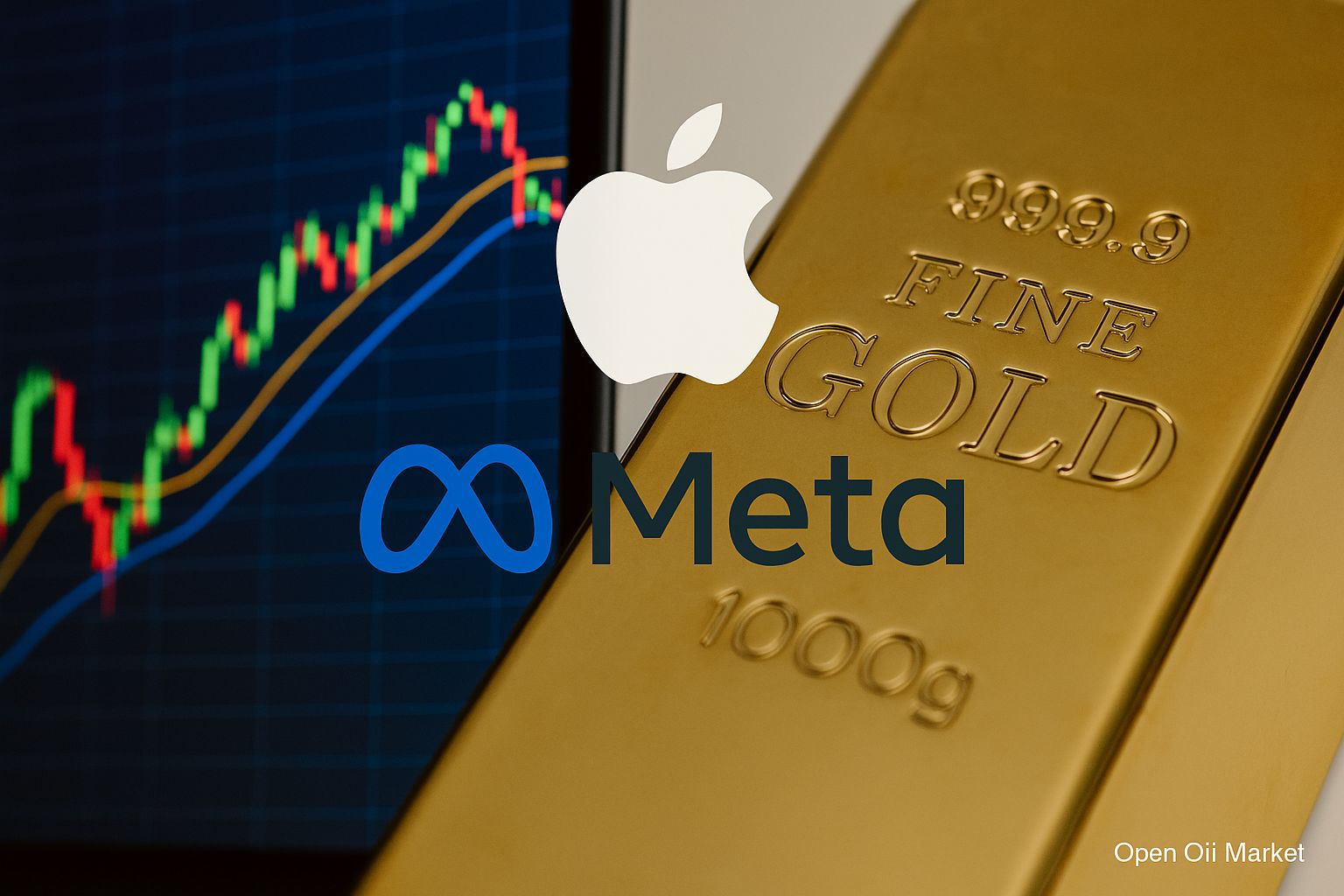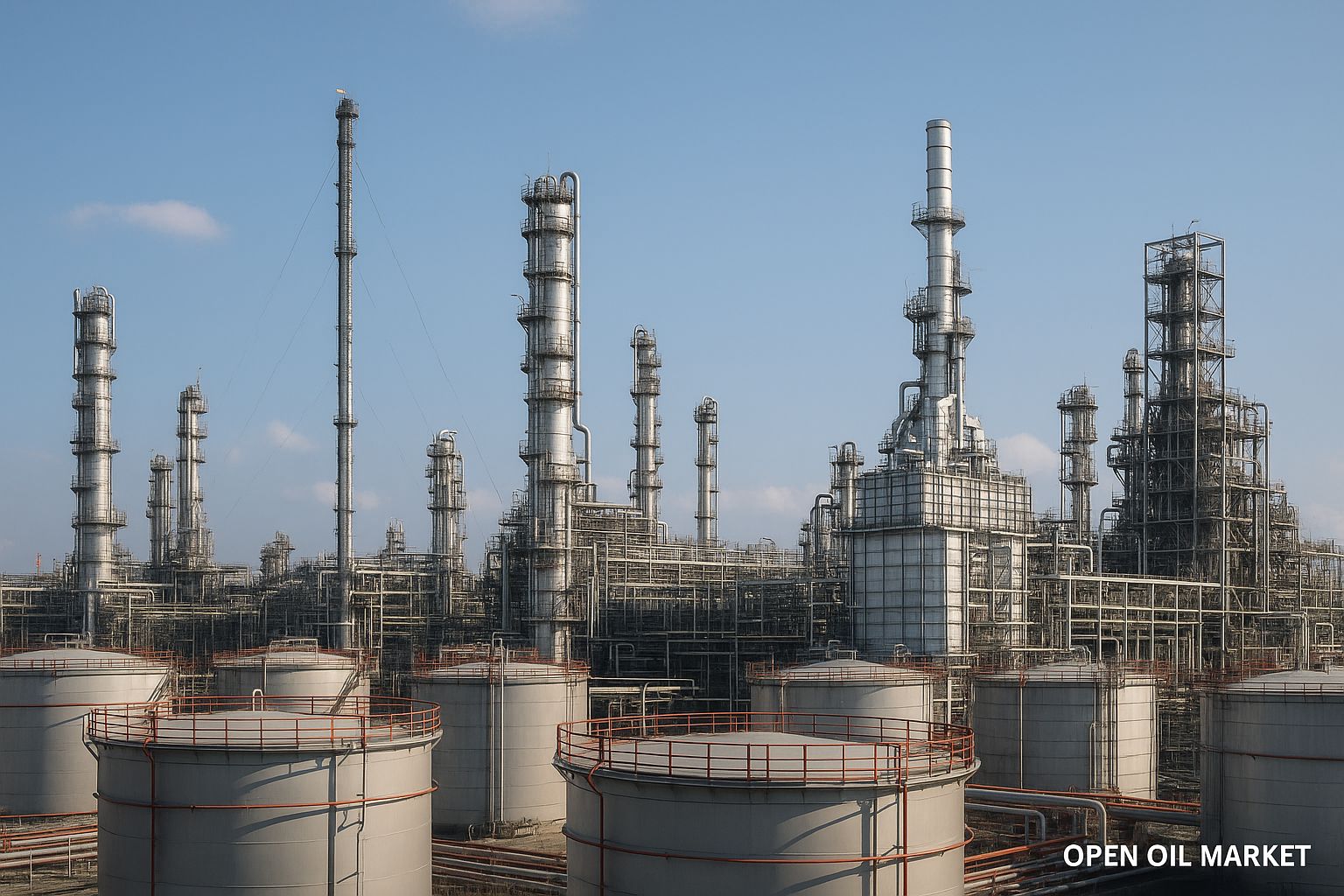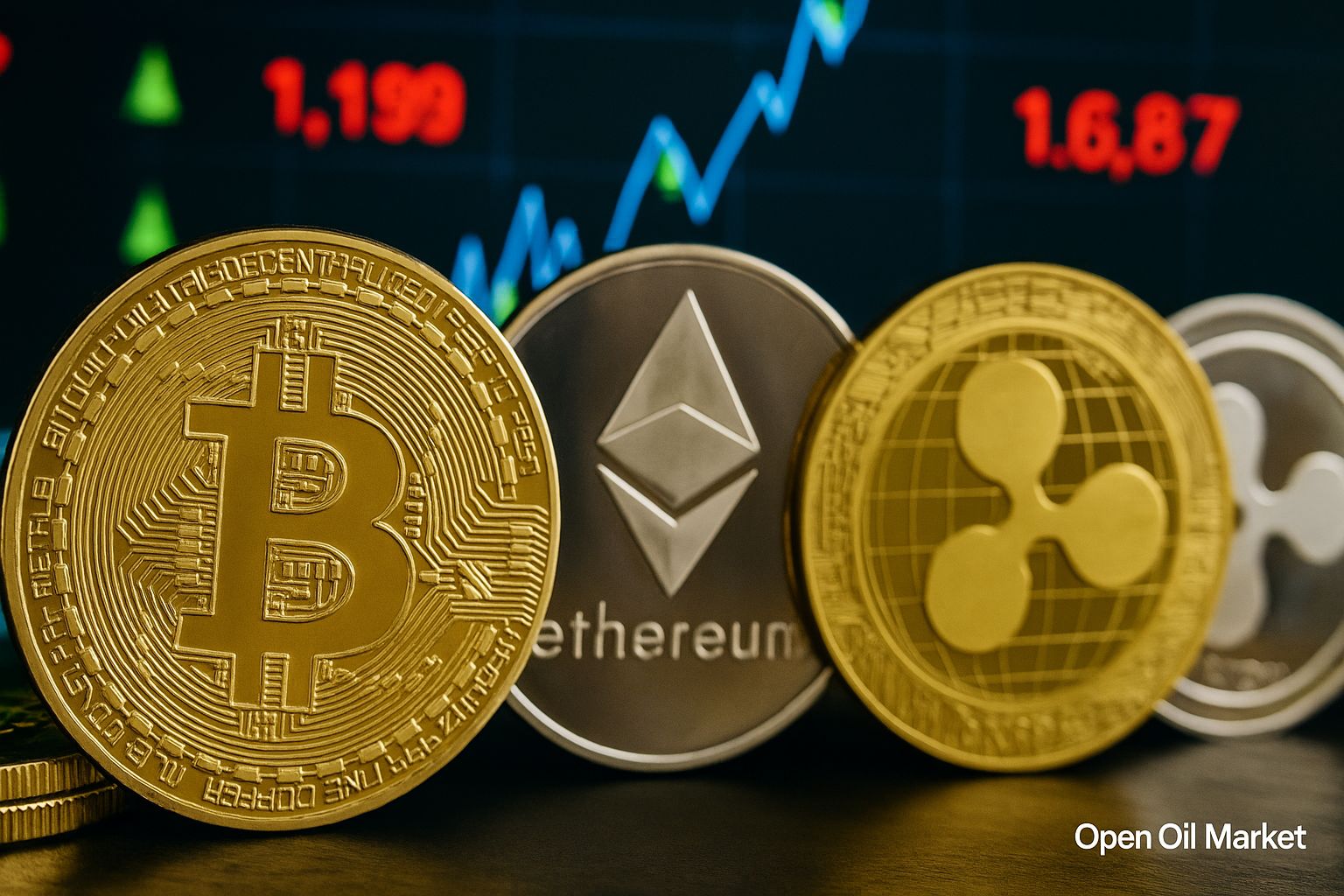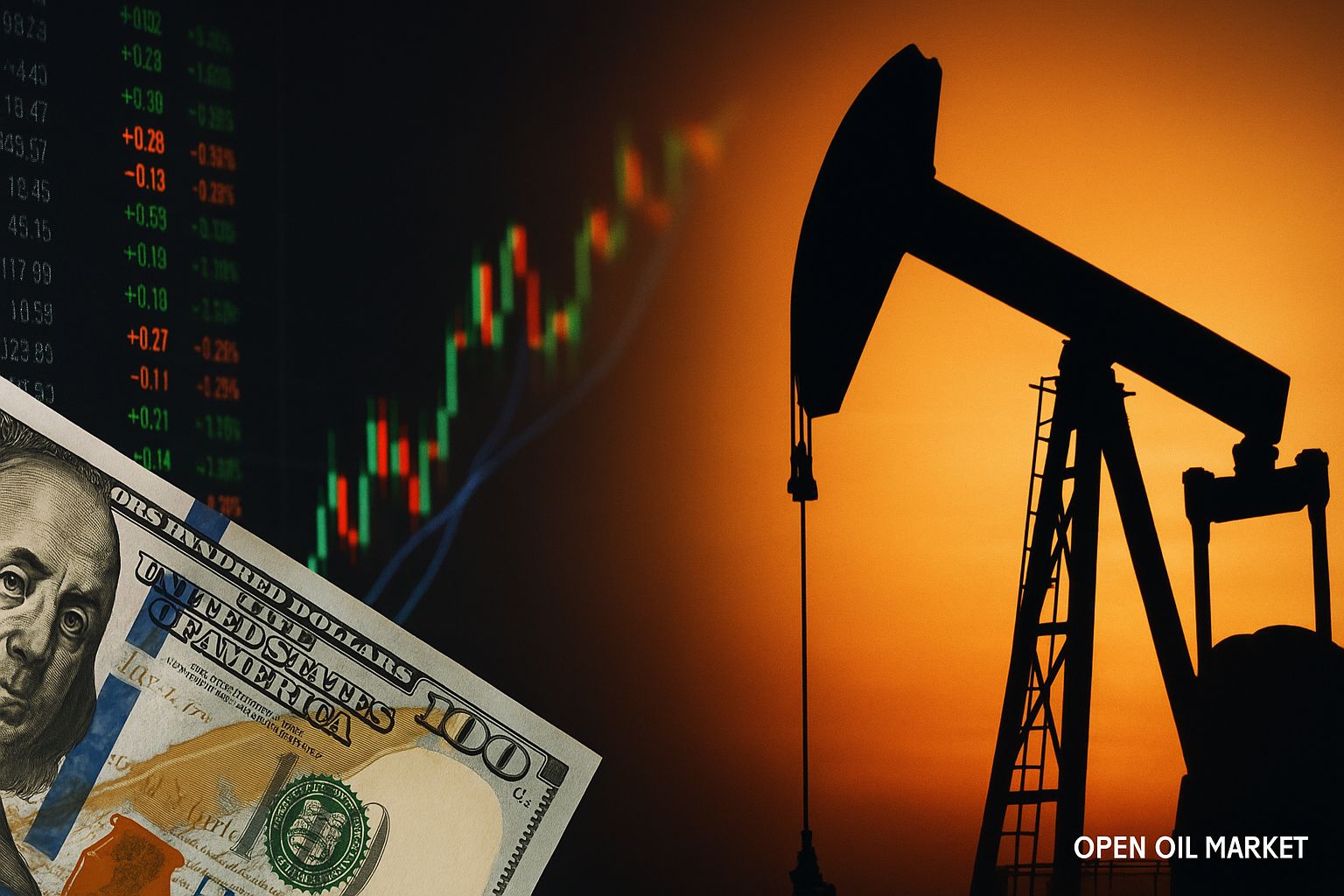
Economic News August 3, 2025 – Fed Rate Cut, Apple and Meta Reports, Rising Gold Prices
Global financial markets are ending the week on a mixed note. On one hand, expectations of an imminent easing of monetary policy in the U.S. have strengthened following a series of disappointing macroeconomic data. On the other hand, geopolitical tensions have somewhat eased: a recent compromise between Washington and Brussels has prevented a new tariff war, which has supported risk appetite. Wall Street, which set records in July, is facing volatility amid mixed signals. Investors are evaluating the prospects of an economic slowdown, but strong reports from tech giants are sustaining interest in risk assets, while some capital is flowing into safe “harbors.” Central bank policy is in the spotlight: the U.S. Federal Reserve has paused and may soon shift to stimulative measures, while the Bank of Russia, after a recent rate cut, is considering further easing.
U.S. Markets: Weak Labor Market and Fed Easing Expectations
The American stock market finished the week with slight losses following disappointing statistics. On Friday, the S&P 500 and Nasdaq indexes corrected by about 0.3–0.4%, although they remained solidly in the green for July and close to their peaks. Investors reacted to a weak July jobs report: non-farm payrolls increased by just ~73,000 – the smallest gain in recent years. Approximately 100,000 new jobs were expected, so this result highlighted a sharp cooling in the labor market. The unemployment rate rose to 4.2% (previously 4.0%), signaling a decline in labor demand. Together with modest GDP growth in Q2 (~1.5%), these figures indicate a loss of economic momentum in the U.S.
The weakening labor market has sharply heightened expectations that the Federal Reserve may begin lowering interest rates in the coming months to support business activity. At the July 30 meeting, the Fed, as expected, maintained the rate at ~5.5%. However, signs of economic slowdown have intensified conversations about an imminent shift in monetary policy. Yields on long-term U.S. Treasury bonds have declined, and the dollar has weakened. Slowing inflation in the U.S. (core ~3.3% y/y in June) provides the regulator with additional room to maneuver. Expectations for a more dovish Fed are now dominant – investors are convinced that the fight against inflation will soon give way to economic stimulus.
Europe: Trade Compromise with the U.S. and Economic Slowdown
European stock indices ended the week with moderate gains. The pan-European STOXX 600 rose around 0.5%, recovering from external risk declines. The main news was the agreement between Washington and Brussels that has prevented the introduction of new U.S. tariffs on EU goods from August 1. The looming threat of a large tariff war over European automotive industry has receded. Shares of major automakers (Volkswagen, BMW, Stellantis) surged on news of the compromise, as the risk of 25–70% tariffs on car exports to the U.S. was lifted. However, uncertainty in global trade remains – negotiations between the U.S. and China as well as other partners are ongoing, and European businesses are still accounting for the possibility of new barriers in the future. The eurozone economy stagnated in Q2 (~+0.1% q/q), and inflation decreased to ~3% (core ~3.5%). The European Central Bank maintained its rate on July 24 and indicated that the tightening cycle may soon conclude. The ECB's softened rhetoric has led to a slight dip in bond yields and a strengthening of the euro. The DAX, CAC40, and FTSE100 indices gained slightly over the week – the easing of tariff risks has offset the impact of high rates and weak external demand.
Asia: Stimulus in China and Sustained Growth in India
Asian markets are showing mixed dynamics, reflecting the contradictions between internal issues and an improving external backdrop. In China, signs of economic slowdown are evident: the industrial PMI in July fell below 50 again (to about 49.5), signaling a contraction in manufacturing activity for the second consecutive month. Weak external demand and cautious consumption are hindering industry. In response, Chinese authorities announced an additional stimulus package: tax reductions for small businesses, eased mortgage lending conditions, and accelerated infrastructure projects in the second half of the year. The People's Bank of China previously lowered key rates (by a total of 0.25 pp in June and July) and is ready to continue easing policy to avoid deflation. These measures aim to help achieve the GDP growth target of ~5% in 2025.
Elsewhere in Asia, positivity prevails. The Japanese Nikkei 225 is holding near multi-year highs – a weak yen and strong corporate reports support exporters; the Bank of Japan maintains its ultra-easy policy, and the yen has stabilized around ¥145 per $1. India also stands out: its stock indices are hitting records, and the economy is expected to grow by more than 6% this year, remaining one of the most dynamic globally. Nevertheless, the factors of China's slowdown and global risks require caution from investors.
Russia: Stable Ruble and Rate Cut Outlook
The past week was calm for the Russian market. The ruble exchange rate, after a brief dip following the July Central Bank decision, stabilized around 80 ₽ per $1. The key rate cut by 200 bps only moderately reduced the attractiveness of ruble assets – outflows of speculative capital were small, as this step was expected and already priced in. The sale of export currency earnings and selective interventions by the regulator smooth out fluctuations, providing relative stability for the ruble even with a shrinking interest rate differential. Volatility in the Russian currency market has significantly decreased compared to the beginning of the year.
The macroeconomic conditions in Russia are gradually improving after last year’s upheavals. Annual inflation has slowed to ~7.5% (compared to >12% last winter), allowing the Bank of Russia to continue lowering rates if current trends persist. The regulator notes a decline in inflation expectations and weak consumer demand, allowing for further policy easing. Yields on government bonds have declined, and the MOEX index remains around 2850 points. Lower rates support domestic demand companies, while commodity exports benefit from high energy prices. Despite ongoing sanction risks, market uncertainty has decreased – a more accommodative central bank policy and a stable ruble create conditions for economic revival in the second half of the year.
Commodity Markets: Oil Balance and Gold Surge
Oil is trading in a narrow range: Brent is holding around $68–69, slightly below early July levels. On one hand, expectations of a global economic slowdown and weak data from the U.S. and China are limiting crude demand. Some analysts foresee prices dropping to $60 by year-end. On the other hand, OPEC+ participants continue to cut production, preventing oversupply: Saudi Arabia has extended voluntary production cuts of 1 million barrels per day (August), and Russia is limiting exports by 500,000 barrels per day. Thanks to these measures, global supplies remain restrained.
Gold is soaring, reclaiming its status as a safe asset. After a brief correction in July, the precious metal is on an upward trend again. By the end of the week, the price of gold reached ~$3380 per ounce, coming close to the historical maximum of around $3400. Weak data from the U.S. has intensified expectations for a Fed rate cut, which has lowered the real yield on bonds and increased gold's attractiveness. Amid uncertainty, investors are seeking a "safe haven" in gold. Fundamental conditions are favorable for further price growth in precious metals: inflation in leading economies remains above target benchmarks, and the shift by central banks towards easing policy is only beginning – this supports high demand for hedge assets like gold.
Corporate Reports: Tech Giants, Oil Leaders, and Consumer Demand
The quarterly earnings season is underway, and the results from the world’s largest companies are showing mixed trends. Below are the most notable reports and trends from recent days:
- Apple – The tech giant exceeded analyst expectations. Apple’s revenue for April–June grew by approximately 10% year-over-year, reaching ~$94 billion – a record for the company’s third fiscal quarter. Net profit was approximately $23 billion (~+9% y/y) due to strong sales of key products and strict cost control. Apple expanded its share buyback program, demonstrating management's confidence in future demand. Strong results reaffirmed the corporation's dominant position even amidst global uncertainty.
- Meta – The owner of the largest social networks reported a strong recovery in financial performance. In Q2, Meta's revenue grew by ~22%, reaching ~$47.5 billion, reflecting a return of advertisers and audience growth. Net profit surged by 36%, surpassing $18 billion, largely due to stringent cost management. Management has a positive outlook on the long-term business prospects, and the market has reacted positively to Meta's return to sustainable profit growth.
- ExxonMobil and Chevron – The American oil and gas giants experienced a decline in profits due to falling energy prices compared to last year, but they maintain a stable financial position. ExxonMobil posted a net profit of about $7 billion in Q2, while Chevron reported around $3 billion. The drop in oil and gas prices has understandably impacted revenues, but stringent cost-cutting and production increases supported operating results. Both companies continue to generate significant cash flow and adhere to a policy of generous dividends and share buybacks, demonstrating their resilience even amid price volatility in commodity markets.
Overall, corporate results reflect a mixed picture in the global economy. Tech leaders continue to enjoy rapid growth on the wave of digitalization and the implementation of AI solutions, while commodity and industrial companies are experiencing pressure from cyclical demand downturns. The financial sector previously benefited from high rates, although some banks have incurred losses in troubled markets. The consumer segment is sending contradictory signals: mass demand is beginning to weaken under the influence of inflation, while premium brands are maintaining high sales among affluent clientele. Investors are analyzing these trends: the resilience of many corporations' profits inspires optimism, but the presence of weak links reminds of risks. As autumn approaches, increasing attention is paid to prospects for central banks' policy easing and whether corporate profits will justify current high stock valuations.




